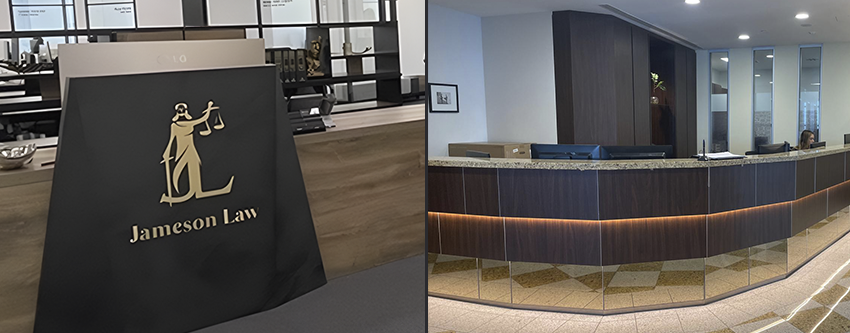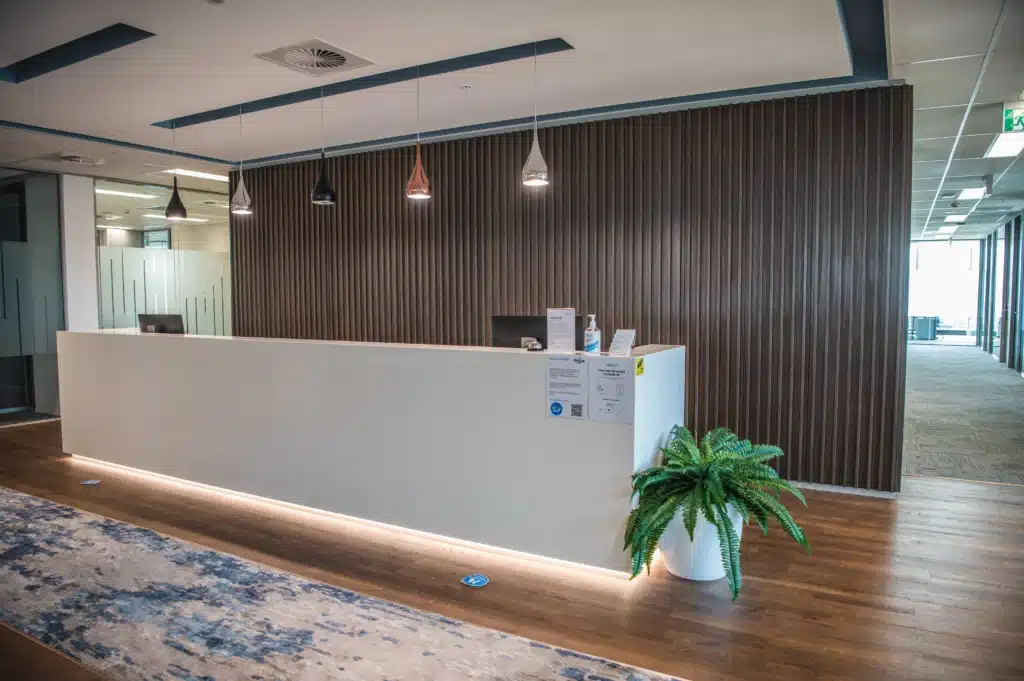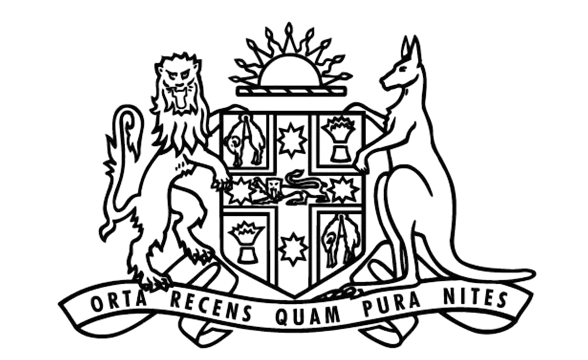So, What is a product liability claim?
In Australia, product liability refers to the legal responsibility of manufacturers, distributors, and sellers for injuries or damages caused by defective products they produce or sell. A product liability claim can arise when a product is deemed to be faulty, unsafe, or not fit for its intended purpose, leading to harm or injury to consumers or their property.
These claims are typically based on breaches of consumer protection laws, negligence, or strict liability principles. Under Australian law, consumers have the right to seek compensation for injuries, losses, or damages caused by defective products through civil lawsuits or claims to regulatory bodies.
Product liability claims often involve complex legal proceedings, requiring evidence of the defect, causation of harm, and negligence or breach of duty by the responsible party. Manufacturers and sellers have a legal obligation to ensure the safety and quality of their products to prevent liability claims.
Understanding the Australian Consumer Law
The Australian Consumer Law (ACL) stands as the cornerstone of consumer protection legislation in Australia, aiming to safeguard the interests of consumers while imposing obligations on businesses.
Being Schedule 2 to the Competition and Consumer Act 2010, the ACL, which was enacted on January 1, 2011, applies to transactions occurring on or after that date, replacing a multitude of federal and state consumer protection laws with a unified framework applicable nationwide. This unified framework was part of a tort reform process throughout Australia. The ACL, along with the Competition and Consumer Act, act as an important way to allow file personal injury claims or product liability claims should consumers need them.
What the ACL covers
The ACL facilitates various types of product liability claims, including those arising from injuries caused by foreign objects in food, faulty appliances, poor workmanship by tradespeople, and defective gym and exercise equipment.
Importantly, if a product is found to have a safety defect, consumers can claim compensation without needing to prove the manufacturer’s knowledge or negligence. This concept, known as strict liability, offers greater protection to everyday consumers by holding businesses accountable for the safety of their products.
Under the ACL, consumers are automatically covered for products or services valued at less than $40,000. Even items exceeding this threshold are covered if acquired for personal or household use. This broad definition ensures that almost any product or service commonly purchased by consumers falls under the ACL’s purview.
Furthermore, the ACL enables consumers to pursue compensation even when products are manufactured overseas and resold in Australia by third parties. This provision ensures that consumers have avenues for recourse irrespective of a product’s origin and ways to address the misleading or deceptive conduct of certain manufacturer’s goods.
Jameson Law can assist individuals in navigating the complexities of the ACL and pursuing compensation claims. For instance, suppose a consumer suffers injuries due to foreign objects found in food purchased from a restaurant. In that case, Jameson Law can help them file a product liability claim against the restaurant, seeking compensation for medical expenses, pain and suffering, and any other losses incurred.
In essence, the ACL serves as a comprehensive framework for consumer protection, providing clear guidelines and avenues for redress in cases of harm or loss caused by faulty products or services. Jameson Law provides an extensive breakdown of the ACL, which can be found here.
Products that can be a part of a Liability Claim
Product liability claims can encompass a wide range of faulty products that have caused injury or harm to consumers. These can include:
-
Faulty Medical Implants or Devices: This category covers implants or medical devices that are defective or fail to perform as intended, leading to injury or health complications. For example, defective breast implants that rupture or cause adverse reactions in patients can result in product liability claims against the manufacturer or distributor. If you were relying on the scientific or technical knowledge of a certain product, then you might have a right to a product liability claim or o personal injury claim.
-
Faulty Goods or Household Appliances: Everyday items like washing machines, irons, dryers, or other household appliances can pose risks if they are defective. Malfunctions in these products can lead to property damage or personal injury. For instance, a faulty washing machine with an electrical defect may cause a fire, resulting in property damage or even injury to occupants.
-
Faulty Machinery, Cars, or Parts: Industrial machinery, automobiles, or their components can also be subject to product liability claims if they are found to be defective. For example, a faulty car part like a defective airbag can cause serious injury in an accident, leading to a product liability claim against the manufacturer or supplier of the faulty component.
-
Dangerous Drugs or Chemical Products: Pharmaceuticals, fertilizers, pesticides, or other chemical products can cause harm if they are unreasonably dangerous or defective. For instance, a medication with undisclosed side effects or a fertilizer with harmful chemicals may lead to health complications or environmental damage, resulting in product liability claims against the manufacturer or distributor.
These examples illustrate the diverse range of products that can be subject to product liability claims in Australia. Such claims may be based on legal theories such as negligence, breach of Australian Consumer Law, or breach of contract, depending on the circumstances of the case and the applicable laws.
Who is eligible for a product liability claim?
To be eligible to make a product liability claim under Part 3-5 of the ACL, you must be an individual who has been harmed by a defective product. This harm can include suffering an injury or even death directly caused by the faulty product. Alternatively, if someone else has suffered harm or death due to the defective product, you may still be eligible for compensation, except in cases where the loss occurred due to a business or professional relationship.
Additionally, if the defective product causes damage or destruction to another product or property that you intended for personal, domestic, or household use, you may also qualify for compensation. It’s important to note that you don’t have to be the direct purchaser of the faulty product to seek compensation, nor do you need to fit the definition of a “consumer” as outlined in the consumer guarantee provisions.
To make a successful claim, you must demonstrate a clear link between the safety defect of the product and the harm or loss you have experienced. This means proving that the defect directly led to the injury, death, or damage suffered. A significant legal case, Gill v Ethicon Sàrl, exemplifies the importance of this link.
In this case, the court ruled that a defective medical device, even when used as intended, can be considered faulty if it poses a significant risk of harm to users. Ultimately, the court found that all nine products in question had safety defects, leading to compensation for the injured parties.
Who is liable for a product liability claim?
In product liability claims, the manufacturer of defective goods is usually held liable if the goods were supplied in trade or commerce. The term “manufacturer” encompasses individuals or companies involved in various stages of production, including growing, extracting, producing, processing, or assembling the goods. Additionally, those who promote themselves as the manufacturer or use their business or brand name about the goods may also be liable. Importers bringing goods into Australia may also bear responsibility if the actual manufacturer does not have a presence in Australia.
However, liability may extend beyond traditional manufacturers. For instance, suppliers who fail to disclose the identity of the manufacturer when requested by the plaintiff, or those who engage in repackaging or labeling products, can also be deemed liable.
Even service providers like restaurants, when involved in producing or assembling food items for customers, may be considered manufacturers under the ACL. Ultimately, liability depends on the level of involvement in the supply chain and the role played in bringing the defective product to market. Reach out to Jameson Law today for any questions you may have regarding product liability.
Time Limit for Product Liability Claims
According to the Australian Competition and Consumer Commission, in Australia, consumers have three years to take legal action once they realize or should have realized, that a faulty product caused them harm or damage, and they know who made it. This time frame gives people a chance to gather evidence and figure out how much they’ve lost before going to court.
Additionally, there’s a rule saying you have up to 10 years from when the manufacturer sold the faulty goods to start legal proceedings. This rule means consumers still have a fair amount of time to sue even if they only discover the problem later on.
These time limits help strike a balance between the rights of consumers and the responsibilities of manufacturers. They give everyone a clear idea of when they need to act, so disputes can be settled fairly. Plus, they make sure manufacturers aren’t on the hook forever for things that happened a long time ago. It’s all about making sure people can enforce their rights and that companies are accountable for what they sell.
Damages that you can use for
Under Australian consumer law, individuals who suffer harm or losses due to faulty products may be entitled to various types of damages. These damages aim to compensate the injured party for their losses and expenses incurred as a result of the defective product. A good lawyer, like those at Jameson Law, will help you navigate this legal maze. Here are different things you can recover damages for:
General Damages:
This category includes compensation for pain and suffering experienced due to injuries caused by the faulty product. For example, if a person sustains physical injuries from a defective household appliance that explodes, they may be entitled to compensation for the pain and trauma endured.
Past Loss of Income:
If the injuries sustained from the faulty product prevent the individual from working at their full capacity or at all, they may be compensated for the income lost during that period. For instance, if a faulty car part causes an accident resulting in injuries that render the victim unable to work for several weeks, they may recover damages for the wages they would have earned during that time.
Future Loss of Income:
In cases where the injuries lead to a long-term reduction in the individual’s capacity to work, they may be entitled to compensation for the future loss of income. For example, if a defective medical implant causes permanent disability, resulting in the individual’s inability to work in their previous capacity, they may recover damages for the loss of future earnings.
Loss of Superannuation:
If the injuries sustained affect the individual’s ability to contribute to their superannuation fund, they may be entitled to compensation for the loss of superannuation benefits.
Medical and Rehabilitation Costs:
Damages may also cover past and future medical expenses incurred for treating injuries caused by the defective product. This includes costs such as hospital bills, doctor’s fees, rehabilitation programs, and therapy sessions.
Out-of-Pocket Expenses:
Additionally, individuals may recover damages for out-of-pocket expenses related to the injury, such as travel expenses to medical appointments, medications, and assistive devices required for rehabilitation.
Maximum damages
In product liability claims, maximum damages for compensation vary based on individual circumstances. Typically, compensation is calculated by assessing the difference between the predicted life path before the injury caused by a faulty product and the actual life path afterwards. This may include factors such as medical expenses, lost income, pain and suffering, and diminished quality of life.
Jameson Law specializes in guiding clients through the complexities of product liability claims, ensuring that they receive the maximum compensation they deserve. With our expertise and dedication, we work tirelessly to advocate for our clients and secure the financial support needed to address the consequences of faulty product injuries. Trust Jameson Lawyers to navigate the legal process and fight for your rights every step of the way.
In a nutshell…
Under Australian consumer law, individuals harmed by faulty products may claim various damages including compensation for pain and suffering, lost income, future income loss, medical expenses, and out-of-pocket costs. Contact Jameson Law today for a consultation about any of your product liability needs.
Understanding what a ‘safety defect’ is
In product liability claims, a safety defect refers to a failure of goods to meet the level of safety that consumers generally expect. This is determined by the “community expectations of safety” test, which considers factors like how the goods were marketed, packaged, intended for use, and the time of supply.
For instance, if a product lacks adequate warnings or instructions for its safe use, it may be considered defective. Even if a defect doesn’t occur in every product, it can still be deemed defective if the potential risk outweighs the consequences. For example, a pharmaceutical product with a low risk of causing a severe adverse reaction may still be considered defective if the potential consequence, such as death, is significant.
There are exceptions to manufacturer liability outlined in the ACL. These include instances where the safety defect didn’t exist at the time of supply, compliance with mandatory standards led to the defect, the defect wasn’t discovered due to scientific or technical limitations at the time of supply, or the defect in a part is attributable to the manufacturer of the finished product.
An example of a safety defect case is Glendale Chemical Products Pty Ltd v ACCC. In this case, a consumer suffered injuries from using caustic soda to clear a drain, causing a volatile reaction due to the lack of adequate warnings about its use with boiling water. Despite the product’s labelling indicating potential danger, the court deemed it defective because it didn’t provide sufficient instructions to prevent the hazard.
In a nutshell…
A safety defect in a product liability claim arises when goods fail to meet the community’s expectations of safety. Exceptions to liability exist under the ACL, but manufacturers can still be held accountable for defects that lead to consumer harm.
Case Study: Jane’s Triumph Against Faulty Medical Devices
Jane, a 42-year-old woman, sought justice after suffering severe complications from a medical device implanted during surgery. She approached Jameson Law for assistance in pursuing a product liability claim against the manufacturer, seeking compensation for her pain, suffering, and medical expenses.
The device, marketed as a revolutionary solution for pelvic organ prolapse, was implanted in Jane during a routine surgical procedure. However, soon after the surgery, Jane experienced excruciating pain, discomfort, and urinary complications. Despite following post-operative instructions diligently, her symptoms persisted, significantly impacting her quality of life.
Upon investigation, Jameson Law discovered that the medical device had a history of causing unforeseen complications in several patients. Despite this knowledge, the manufacturer had failed to adequately warn healthcare professionals and patients about the potential risks associated with the device. Furthermore, the manufacturer had misrepresented the safety and efficacy of the product, leading to widespread use without full awareness of the dangers involved.
Armed with compelling evidence and expert testimony, Jameson Law filed a product liability claim on behalf of Jane against the manufacturer. The legal team meticulously built a case highlighting the negligence and disregard for consumer safety displayed by the manufacturer. They argued that the device had a safety defect, as it posed significant risks that were not reasonably expected by patients or healthcare providers.
After a rigorous legal battle, the court ruled in favour of Jane, acknowledging that the medical device was indeed defective and had caused her undue harm. Jane was awarded significant compensation, including coverage for her medical expenses, lost income, pain and suffering, and ongoing care needs.
Jane’s triumph against the manufacturer not only provided her with the financial support she needed but also set a precedent for holding companies accountable for prioritizing profit over consumer safety. Jameson Law’s dedication, expertise, and commitment to justice ensured that Jane’s voice was heard and that she received the justice she deserved.
Steps for Product Liability Claims in Australia
If you believe you may have a product liability claim, it’s crucial to follow these steps to protect your rights and strengthen your case:
-
Seek Medical Advice: Your health and well-being come first. Make sure to seek medical advice for any injuries sustained due to the faulty product. Your medical records will be important evidence in your claim.
-
Preserve the Faulty Item: Don’t discard the faulty item. Keep it in a safe place as it could serve as crucial evidence in your claim. Preserving the item can help demonstrate the defect and its connection to your injuries.
-
Document Relevant Information: Take photographs of anything pertinent to your claim, such as the environment where the incident occurred or any damage caused to vehicles or property. These visual records can provide additional support for your case.
-
Keep Detailed Records: Maintain records of all medical documents, including referrals and receipts for medical treatment related to your injuries. Additionally, gather proof of purchase and any instructions that came with the product, as they may be useful in establishing liability.
-
Seek Legal Advice: If you’re unsure about the circumstances of your injury or whether you have a viable claim, it’s wise to consult with legal experts. Seeking legal advice, particularly from experienced professionals like Jameson Law, can help you understand your rights, assess the merits of your claim, and navigate the complex legal process effectively.
Working with Jameson Law can provide invaluable support and guidance throughout your product liability claim. Their expertise in consumer rights and product liability law can ensure that you receive fair compensation for any harm or losses suffered due to a defective product. Don’t hesitate to reach out to them for assistance in pursuing your claim and protecting your rights as a consumer.
In a nutshell…
In a nutshell, for a successful product liability claim in Australia, seek medical advice for injuries sustained, preserve the faulty item as evidence, document relevant information including photographs, and maintain detailed records.
Then, seek legal advice from experts like Jameson Law to assess the viability of your claim and navigate the legal process effectively, ensuring fair compensation for harm caused by defective products.
Enforcement of Australian Consumer Law
Australia doesn’t have one singular ‘consumer protection agency’ in the same way other countries may have. In Australia, the Australian Consumer Law (ACL) is enforced by several agencies, including the Australian Competition and Consumer Commission (ACCC), State and Territory consumer protection agencies, and the Australian Securities and Investments Commission (ASIC). These agencies work together under a Memorandum of Understanding (MOU) to ensure compliance with the ACL.
The ACCC plays a central role in enforcing the ACL at the national level, while state and territory consumer protection agencies also have enforcement responsibilities. These agencies collaborate on a ‘one law, multiple regulators‘ model to address various consumer issues. This cooperative approach ensures consistent enforcement and protection of consumer rights across Australia.
Speak to a lawyer today
If you’ve been harmed by a faulty product, Jameson Law is here to fight for your rights and secure the compensation you deserve. Our team of experienced legal professionals specializes in product liability claims and is dedicated to advocating for consumers like you.
Don’t navigate the complexities of a product liability claim alone. Whether it be product safety problems or looking to better understand product liability insurance, with Jameson Law by your side you can trust that your case will be handled with care, expertise, and determination. From gathering evidence to negotiating with manufacturers and insurers, we will tirelessly pursue justice on your behalf.
By choosing Jameson Law, you’re choosing a team that prioritizes your well-being and is committed to achieving the best possible outcome for your case. Whether it’s seeking compensation for medical expenses, lost income, or pain and suffering, we will be your advocates every step of the way.
So if you’re ready to take action and hold negligent parties accountable, contact Jameson Law today. And remember, we are in it to win it!
FAQs
What are my rights as a consumer?
All Australian consumers are entitled to certain rights. These are known as consumer guarantees. As a consumer in Australia, you’re protected by the Australian Consumer Law (ACL), which guarantees certain rights in various areas of transactions. The ACL prohibits unfair contract terms in consumer contracts and ensures that goods and services meet acceptable standards of quality and safety. You have the right to seek remedies if products or services fail to meet these standards.
Additionally, the ACL provides protections in unsolicited consumer agreements, including cooling-off periods and restrictions on sales tactics. Lay-by agreements are also regulated to ensure fairness and transparency. Overall, the ACL empowers consumers by providing clear rights and avenues for redress in cases of unfair treatment or defective products.
How long can product liability litigation take?
Product liability litigation can vary in duration depending on factors like the complexity of the case, evidence availability, and court schedules. Simple cases might resolve within a few months to a year, while more complex ones can take several years to resolve.
Parties may engage in pre-trial procedures, such as discovery and negotiation, which can extend the process. Additionally, court backlogs and appeals can further prolong litigation. Overall, the timeline for product liability litigation can range from several months to several years, with each case’s duration unique to its circumstances.
What is a valid defence to a product liability claim?
A valid defence to a product liability claim could include proving that:
-
The safety defect didn’t exist when the goods were supplied.
-
The safety defect occurred due to compliance with a mandatory standard.
-
The defect wasn’t discovered due to scientific or technical knowledge at the time of supply.
-
The safety defect in a part of the goods is attributable to the manufacturer of the finished product.
These defences aim to show that the manufacturer took appropriate measures and wasn’t negligent, thus mitigating their liability in the product liability claim.
Who is liable for product liability?
In product liability cases, the manufacturer is typically held responsible for defective products. This includes anyone involved in the manufacturing process, such as those who produce, assemble, or import the goods. Additionally, businesses that promote or brand the products may also be liable.
Even if a product is repackaged or relabeled, those involved in these processes could be held accountable. In essence, liability extends to anyone in the supply chain who contributes to the creation or distribution of the defective product. If you have any questions regarding a possible product liability claim, contact Jameson Law for a consultation.













